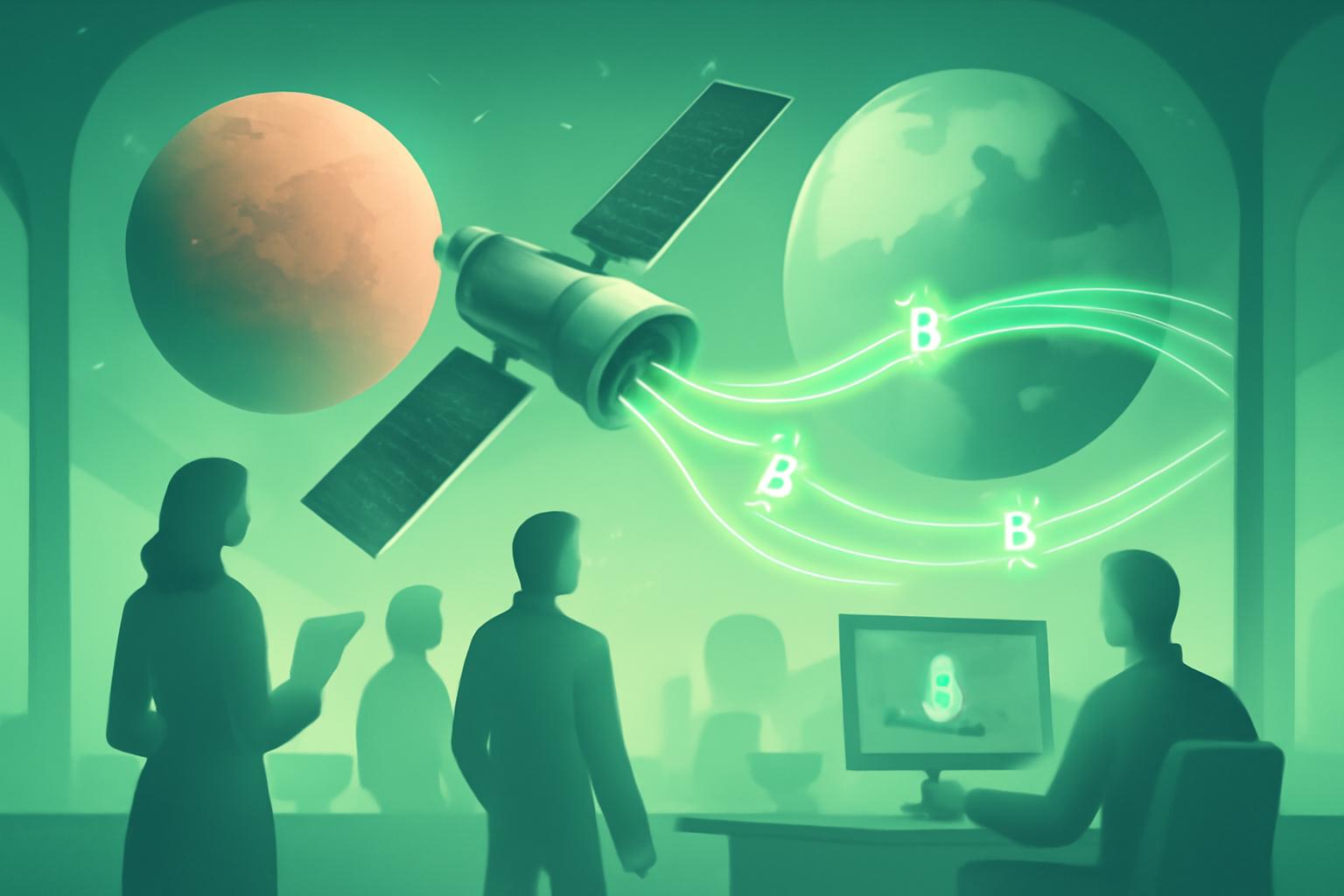Innovative Timestamping Method Could Enable Bitcoin Transfers to Mars
Researchers have introduced a groundbreaking approach that could make Bitcoin transactions between Earth and Mars feasible using current technology. The concept, called Proof-of-Transit Timestamping (PoTT), was detailed in a recent white paper by tech entrepreneur Jose E. Puente and his colleague Carlos Puente.
How PoTT Works
PoTT envisions Bitcoin payments hopping through a network of relay points, including ground antennas, satellites, and lunar relays. At each station, the transaction is timestamped, creating a verifiable record of its journey before reaching its destination on Mars.
According to Jose Puente, PoTT acts as a “receipt layer” for Bitcoin and the Lightning Network, leveraging optical communication links developed by entities such as NASA and SpaceX’s Starlink. This method could enable Bitcoin to become the first currency capable of seamless interplanetary transactions.
Transaction Speeds and Network Resilience
Simulations suggest that Lightning Network payments using PoTT could reach Mars in approximately three minutes under ideal conditions, with worst-case delays extending to around 22 minutes. Standard Bitcoin transactions would still be subject to typical block times plus signal latency.
One significant challenge is the biannual communication blackout caused by solar interference, lasting about two weeks. Puente proposes routing messages around the Sun using relay satellites to maintain connectivity during these periods.
Practical Considerations and Future Prospects
While the technology is reportedly ready for deployment, a critical prerequisite is the presence of a recipient on Mars capable of accepting Bitcoin payments—be it a human or artificial intelligence. To date, Mars has only been visited by robotic probes, with no human settlement established.
Space companies like Blue Origin have recently begun accepting cryptocurrencies, including Bitcoin, but their operations remain near Earth’s orbit. SpaceX aims to establish a human presence on Mars by 2026, which could provide the necessary infrastructure for interplanetary financial transactions.
Industry Perspectives
Elon Musk has acknowledged the need for a standard currency for Earth-Mars commerce but has raised concerns about Bitcoin’s inherent latency. Puente argues that integrating PoTT with the Lightning Network addresses these issues by enabling rapid local transactions with global settlement.
Puente emphasizes Bitcoin’s suitability as an open, neutral monetary system for a multi-planet civilization, free from dependence on any single organization or government.
Extending Beyond Mars
The PoTT framework is designed to be planet-agnostic, capable of facilitating secure transactions across any body within a star’s habitable zone. Although current research focuses on Earth and Mars due to their relative proximity, the system could theoretically support payments to the Moon or other planets.
Historical Context
This development builds on prior milestones, including Blockstream’s 2018 initiative connecting Bitcoin to satellites and Spacechain’s 2020 demonstration of Bitcoin transactions from the International Space Station, proving space-based Bitcoin transfers are technically possible.
FinOracleAI — Market View
The introduction of Proof-of-Transit Timestamping represents a significant technological advancement that could extend Bitcoin’s utility beyond Earth, potentially catalyzing interest in space-based finance and cryptocurrency applications. However, practical adoption depends on establishing human or AI recipients in extraterrestrial environments, which remains a medium-to-long-term prospect. Market participants should monitor developments in space colonization and satellite communication infrastructure, as these will be critical enablers. Risks include technical challenges of maintaining consistent interplanetary connectivity and regulatory uncertainties surrounding crypto use in space.
Impact: positive













